Google Ads Sizes: A Consultant's Guide to Outsmarting Bloated Agencies
- Chase McGowan

- Nov 7
- 14 min read
Most Google Display campaigns bleed money for one simple reason: they’re built on a generic, one-size-fits-all approach to ad dimensions. It’s a common and costly mistake, often pushed by large, over-priced agencies that apply the same tired templates to every client. This completely ignores the nuances of viewability and placement context. As a specialized consultant, I know a strategic understanding of Google Ads sizes is your single most powerful tool for turning performance around and stopping wasteful spend.
Why Your Google Ads Sizes Strategy Is Failing
If your display campaigns are underperforming, I’d bet the problem lies in your ad size strategy—or the lack of one. Too many businesses, often guided by bloated, overpriced agencies, just create a handful of standard ad sizes and hope for the best. This "set it and forget it" mentality is a recipe for wasted ad spend and squandered opportunities, something my focused, hands-on approach is designed to prevent.
The reality on the ground is that different ad dimensions perform differently based on the device, the website's layout, and what the user is doing at that moment. An ad that looks great on a desktop sidebar might be completely invisible or ineffective on a mobile screen. This is exactly where the impersonal, template-driven agency model breaks down. They simply lack the specialized focus to tailor creative assets to the specific ad placements that actually drive conversions for your business.
The Specialist Advantage Over Agencies
An expert consultant goes much deeper. We don't just upload the "top five" ad sizes and call it a day like a typical agency. My work involves digging into placement reports, identifying the high-value inventory, and then creating custom-sized creative that fits those premium slots like a glove. This nuanced, individual approach has a direct, measurable impact on the KPIs that matter.
Here’s how a specialized strategy actually makes a difference:
Improved Viewability: Selecting the right sizes, like the 300x600 "half-page" ad, ensures your message is actually seen, not just buried at the bottom of a page where no one scrolls.
Higher Click-Through Rates (CTR): It’s simple. Ads designed for their specific context by a dedicated expert are more engaging and earn more clicks.
Better Quality Score: Google rewards relevance. Using appropriate ad sizes for specific placements tells the algorithm you know what you’re doing, which can lead to a higher Quality Score and lower your costs.
Ultimately, my detailed, hands-on approach prevents the quiet budget drain that plagues so many campaigns managed by large, impersonal firms. Understanding how to properly measure advertising effectiveness is the first step, but executing a smart ad size strategy is how you maximize your return.
To really get a handle on today's Google Ads sizes, you have to know where they came from. The ad world wasn't always this fluid; it started with clunky, fixed-size ads that required a ton of manual work. This history isn't just trivia—it highlights the strategic pivot that now separates winning campaigns from the ones that bleed cash under bloated agency management.
Back in the early days of Google AdWords, advertisers were stuck with a small, set menu of ad dimensions. Launching a display campaign meant grinding out dozens of individual creative files, hoping you had one that matched the random ad slots on different websites.
This rigid system was a nightmare. It left huge gaps in your reach and was incredibly time-consuming. Frankly, it’s a process many bloated agencies still cling to, charging clients hourly for outdated, inefficient grunt work that just doesn't connect with users across the millions of sites and apps out there today.
From Static to Automated
Things started getting a bit more organized when the industry adopted standards from the Interactive Advertising Bureau (IAB), which brought some much-needed order to the chaos. But the real game-changer was the introduction of Responsive Display Ads (RDAs). This completely flipped the script, shifting the focus from mind-numbing manual creation to smart, strategic asset management.
Google Ads sizes have come a long way since the platform launched back in 2000. Advertisers used to be forced to create fixed-size display ads for specific placements, but RDAs changed everything. These ads automatically resize and reformat themselves to fit any available ad slot, which perfectly aligns with Google's push to dominate every device screen while leaning heavily on automation for better performance.
Grasping this evolution is crucial. It’s the difference between an individual expert who understands the why behind modern ad formats and an agency account manager who just follows a checklist without any deep strategic insight.
Before we get into the nitty-gritty of modern dimensions, you need to have the fundamentals down cold. A huge piece of this is understanding aspect ratio and why it’s so critical for any visual content you create.
This foundational knowledge lets you be more strategic with your assets, making sure your images and videos look sharp no matter how Google’s algorithm decides to slice and dice them. It’s this deeper, foundational expertise that an experienced consultant brings to the table—moving way beyond simple execution to deliver results that actually matter.
Responsive Display Ads: A Smarter Approach
Forget about manually creating dozens of static ads for different Google Ads sizes. There's a much more efficient—and powerful—way to do things. Responsive Display Ads (RDAs) are the modern standard, and for good reason. You upload the core assets—images, headlines, logos, and descriptions—and let Google’s machine learning do the heavy lifting.
The system then automatically assembles these components into ads that perfectly fit nearly any available space across the Google Display Network. This is a game-changer.
This asset-based approach is the direct antidote to the inefficient and costly methods many large agencies still use. I’ve seen it time and again: they bill clients for hours of unnecessary design work, creating a massive portfolio of fixed-size ad variants that a smart system could handle automatically. This outdated practice not only inflates your bill but also cripples your campaign's reach and ability to adapt. As a consultant focused on making your budget work harder, my entire strategy is built on this smarter, more cost-effective technology.
The Core Benefits of Using RDAs
Shifting to a responsive-first strategy isn't just about saving time; it's about getting better results, period. Google's system tests countless combinations of your assets to pinpoint the top-performing variations, delivering performance boosts that are nearly impossible to replicate by hand. This constant optimization respects your budget by steering ad spend toward the combinations that actually drive clicks and conversions.
Here’s why this modern approach is a non-negotiable for serious advertisers:
Massive Reach: RDAs automatically resize and reformat to fit all available ad inventory. This means your message can appear on millions of websites and apps without you needing to create hundreds of specific Google Ads sizes.
Serious Time Savings: You provide the creative components just once. This frees up huge chunks of time and resources that would otherwise be wasted on tedious design tasks, allowing us to focus on high-level strategy and optimization.
Built-in Performance Optimization: Google's AI analyzes which headline, image, and description combinations perform best for different audiences. It then automatically prioritizes the winners to improve your campaign's ROI.
Adopting RDAs is a strategic decision to work smarter, not harder. It’s about letting technology handle the repetitive tasks, which allows an expert like me to focus on the nuanced strategy that bloated agencies often overlook.
By embracing this method, you stop paying for an agency's outdated processes and start investing in a system designed for maximum impact and efficiency. This is the fundamental difference between hiring an agency that profits from complexity and partnering with a consultant dedicated to delivering streamlined, powerful results. Your ad budget should fuel growth, not an agency’s outdated workflow. Together, we can build a more agile and effective display strategy.
Essential Fixed Ad Sizes for Strategic Control
Responsive Display Ads might be the workhorse of a modern campaign, but leaning on them exclusively is like leaving money on the table. It's a classic mistake I see from overpriced agencies who are either too reliant on automation or stuck in old, inefficient workflows. Real strategic control means knowing exactly when to step in with fixed ad sizes for surgical precision and maximum impact.
Fixed-size ads give you total command over your creative. The layout, branding, messaging, and call-to-action appear precisely as you designed them—no exceptions. This is absolutely critical for high-value placements on specific sites where you need to nail that first impression. A smart, hybrid strategy that blends automation with manual precision is what separates an expert consultant from a bloated agency running the same old playbook.
The infographic below gives you a good idea of how RDAs pull together your assets using Google's AI to fit various ad slots.

While this shows the power of automation, fixed ads are the perfect complement. They allow for pixel-perfect designs in those key ad slots where automation just can't guarantee the same level of polish.
Quick Reference Guide to Top Performing Fixed Ad Sizes
To help you prioritize your creative efforts, I've put together a quick-reference table. This isn't an exhaustive list, but it covers the heavy hitters that consistently deliver the best results across desktop and mobile.
Ad Dimension (Pixels) | Common Name | Primary Device | Best Use Case |
|---|---|---|---|
300 x 250 | Medium Rectangle | Desktop | Embedded within articles or at the end of content posts |
336 x 280 | Large Rectangle | Desktop | High-impact placements where CTR is a key goal |
728 x 90 | Leaderboard | Desktop | Above-the-fold brand awareness on forums or news sites |
300 x 600 | Half-Page | Desktop | Dominating sidebars for maximum viewability and impact |
320 x 50 | Mobile Leaderboard | Mobile | Standard top or bottom banner for mobile branding |
320 x 100 | Large Mobile Banner | Mobile | A more visible alternative to the standard mobile banner |
Focusing your design resources on these formats first is a smart move that ensures you have high-quality creative ready for the most valuable inventory on the Google Display Network.
Top Performing Fixed Ad Sizes for Desktop
Certain Google Ads sizes have stood the test of time on desktop, consistently delivering high viewability and solid engagement. Ignoring these is a surefire way to limit your campaign’s reach and impact.
300 x 250 (Medium Rectangle): This is one of the most common ad sizes on the entire internet for a reason. It performs exceptionally well when it’s embedded right inside text content or placed at the end of an article, grabbing attention without feeling disruptive.
336 x 280 (Large Rectangle): A slightly bigger version of the Medium Rectangle, this size gives your creative a bit more room to breathe. It often pulls in a higher click-through rate, especially when you can secure a prominent placement.
728 x 90 (Leaderboard): The classic banner. You’ll typically see this sitting right above the main content on news sites and forums. It's a fantastic tool for driving brand awareness and staying top-of-mind.
300 x 600 (Half-Page): This one is hard to miss. The large format delivers a huge visual punch and provides plenty of space for compelling creative. It’s a top performer when it comes to viewability metrics.
Key Fixed Ad Sizes for Mobile Campaigns
On mobile, every pixel counts. Screen space is tight and user attention is scattered, so using the right ad sizes is non-negotiable for reaching audiences on the go. While RDAs are excellent for mobile, these fixed sizes can be powerful additions.
320 x 50 (Mobile Leaderboard): This compact banner is built for mobile screens, usually appearing as an anchor at the very top or bottom of the viewport. It’s the industry standard for mobile branding.
320 x 100 (Large Mobile Banner): Offering double the height of the standard mobile leaderboard, this format gives your message more space and almost always performs better as a result.
The real art is in choosing the right blend of fixed and responsive ads. This is where an expert's strategy makes all the difference. It's about digging into the placement data to pinpoint exactly where a handcrafted, fixed-size ad will crush an automated one, making sure every dollar of your budget works as hard as it possibly can. You can go deeper on these display advertising best practices to avoid agency inefficiency and see for yourself how a nuanced approach drives far better results.
How Ad Dimensions Impact Campaign Performance
Choosing your Google Ads sizes isn't just a creative choice—it’s a direct lever on your business results. The dimensions you run have an immediate and significant impact on the metrics that actually matter: click-through rate (CTR), viewability, and, of course, your conversion rates.
This is exactly where an experienced consultant’s eye for detail separates a winning campaign from a losing one. A typical agency might get your ads live, but an expert like myself digs into the why—the user psychology behind which ad formats work best in specific situations. That granular analysis is what uncovers real optimization opportunities that drive ROI, not just check a box on a task list.
Matching Ad Size to User Behavior
Think for a second about how people browse. A user on a desktop often has more time and attention to spare, making them more receptive to larger, more immersive ads. It’s no surprise that a big, bold ad can really command attention and drive action in that environment.
Now, contrast that with a mobile user. They're usually on the move, scrolling fast through content on a much smaller screen. For them, a smaller, punchier ad is what works. It has to grab their fleeting attention without totally disrupting what they're doing.
Getting this distinction right is everything. A beautiful, large-format ad designed for a desktop will completely fall flat on mobile if it’s slow to load or formats poorly. The entire game is about matching the ad’s dimensions and creative to the user's device and mindset.
This is the kind of strategic thinking that separates a true specialist from a big firm that just slaps the same template on every client, no matter their goals or audience.
How Dimensions Influence Key Metrics
When you look at the data, the connection between Google Ads sizes and performance becomes crystal clear. Some formats are just fundamentally better at grabbing eyeballs and getting clicks.
Viewability: It's simple, really. Larger ad units like the 300x600 Half-Page naturally score higher on viewability. They take up more screen real estate and are just plain harder to ignore.
Click-Through Rate (CTR): More prominent ad sizes, like the 336x280 Large Rectangle, almost always pull in higher CTRs. They give you more room for compelling visuals and a strong call-to-action. If you want to go deeper, you can see how size plays a critical role when improving click-through rates in Google Ads.
Conversion Rates: The logic follows. If your ad is highly visible and earns more clicks, it creates more opportunities to convert. Better inputs lead to better outputs.
To really get an edge here, you have to know what your competition is doing. Using the right platforms provides essential tools for AdWords competitor analysis, giving you a direct look into the ad sizes and strategies that are working for them.
To really get a handle on Google Display ads, you have to understand the tech that built the sandbox we all play in. Knowing which ad sizes work best is table stakes. But understanding why those sizes exist and how they came to be? That’s what gives you a real strategic edge.
It’s the kind of deep industry knowledge that separates a dedicated consultant from a junior agency account manager who’s just following a checklist. The ad tech world didn't just pop into existence; it was pieced together through huge acquisitions and tech advancements that created the programmatic advertising system we use today.
How the DoubleClick Deal Changed Everything
One of the biggest game-changers happened way back in 2008. Google’s acquisition of DoubleClick for a staggering $3.1 billion completely reshaped the world of ad sizes and formats. DoubleClick’s tech was the engine for managing display ads and ad exchanges at a massive scale, and it supported a huge variety of creative dimensions.
By bolting this powerful ad server onto its own platform, Google locked down its dominance in programmatic advertising. This move enabled real-time bidding and, more importantly, blew the doors open for non-standard, high-impact sizes like the 970x250 Billboard and the 300x1050 Portrait. If you want the full story on how Google cornered the ad tech market, it's worth a read.
This single deal massively expanded the creative canvas for advertisers. Suddenly, campaigns weren't stuck in a handful of tired, old banner sizes. You could now get your ads on inventory across the entire web in countless new formats.
This shift created immense opportunity, but it also introduced a ton of complexity. A lot of agencies got spooked and just stuck to the old, comfortable ad sizes, leaving a ton of performance on the table. An expert consultant, however, sees all this new inventory as a strategic advantage—a chance to find untapped placements that competitors are completely ignoring.
At the end of the day, knowing this history is critical to building better campaigns right now. It directly informs how I approach placement selection, creative development, and my overall strategy. It’s about understanding the entire battlefield, not just the tiny corner you can see inside the Google Ads platform. That’s the difference between just running ads and actually engineering a campaign for maximum return.
Common Ad Size Mistakes and How to Fix Them
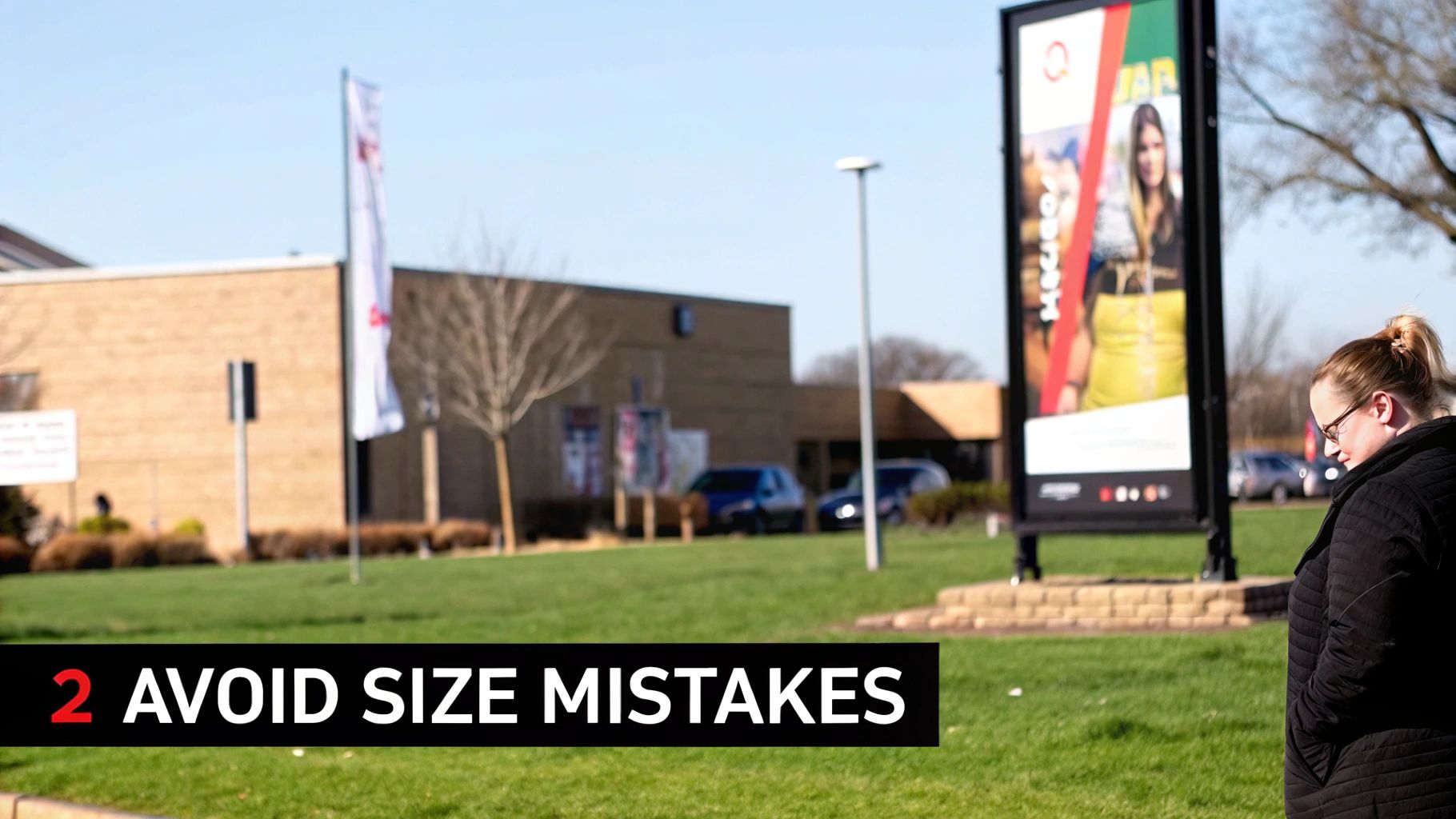
I’ve seen it a hundred times: businesses hemorrhaging ad spend because of simple, avoidable errors with their Google Ads sizes. We're not talking about sophisticated strategic blunders here. These are the fundamental mistakes that slip through the cracks when big, impersonal agencies run campaigns on autopilot. Finding and fixing these issues is often the quickest way I deliver immediate, tangible value for a new client.
The single most common error I find is uploading low-resolution images for Responsive Display Ads (RDAs). When an agency is just trying to check a box, they rush the asset creation, and you end up with blurry, unprofessional ads that tank your click-through rates and damage your brand's credibility.
The fix is dead simple: always provide images at the highest resolution you can. For RDAs, that means sticking to the 1.91:1 ratio (1200x628 pixels) for landscape and the 1:1 ratio (1200x1200 pixels) for square formats. Don't give Google's system a reason to make your ads look bad.
Another costly oversight is clinging to desktop-first dimensions. I still see campaigns managed by agencies stuck in 2015, prioritizing desktop formats while the massive mobile audience gets ignored. In today's market, that’s a critical failure in campaign management.
Practical Fixes for Common Problems
To stop the bleeding, you have to be proactive. You can't just let a campaign run unchecked—that's a classic symptom of bloated agency service. Here’s a quick playbook I use to clean things up:
Problem: Your RDA images look pixelated or are getting cropped awkwardly in certain placements. * Solution: Get into your asset library and swap out any low-quality images. More importantly, make sure your logo, product, or core message is centered. This way, it stays visible even when Google’s algorithm automatically crops the image to fit a specific ad slot.
Problem: Your ads keep getting disapproved for violating Google's policies. * Solution: Ditch the gimmicks. Fake buttons, strobing animations, and other distracting elements are easy ways to get flagged. Google's ad policies are strict, and an experienced specialist knows how to design effective creative that sails through the approval process.
This is exactly where a specialist shines. My job isn't just to set up campaigns; it's to audit them for these exact kinds of costly mistakes. I act as your expert troubleshooter, cleaning up the errors that generic, one-size-fits-all agency work inevitably leaves behind. The goal is to make every single ad impression work as hard as possible for your budget.
Google Ads Size FAQs: Your Questions Answered
When it comes to Google Ads sizes, a lot of agencies make it seem more complicated than it is. Let's cut through the noise and get straight to what actually works for a high-performing campaign. Here are the clear answers to the questions I hear most often from clients leaving their old agencies.
What Are the Most Important Google Ads Sizes for Mobile?
Years ago, the answer would have been a list of specific sizes like 300x250, 320x50, and 320x100. Today, that thinking is outdated. The best mobile-first strategy, bar none, is to use Responsive Display Ads (RDAs).
RDAs automatically resize your assets to fit pretty much any mobile placement available, which means you get maximum reach without the headache. It completely avoids the old-school agency practice of manually creating dozens of individual ad files, a process that just wastes time and your money.
What Is the Maximum File Size for Display Ads?
For any image ad you upload to the Google Display Network—whether it's a JPG, PNG, or GIF—the file size has a hard limit of 150 KB.
This isn't just a suggestion; it's a critical requirement for getting your ads approved. Plus, smaller files mean faster load times, which is always better for the user and can give your campaign a subtle performance boost.
Should I Use Fixed-Size Ads or Only Responsive Ads?
For the vast majority of campaigns—I'd say about 90% of them—starting with Responsive Display Ads is the smartest move. It's the most efficient way to get massive reach and let Google's machine learning do the heavy lifting to find conversions.
But here’s where real expertise comes in: you should supplement your RDAs with a handful of key fixed-size ads. Think of these as your "hero" ads for high-value placements where you need total creative control, like a homepage banner on a top industry site. This hybrid approach is the hallmark of an expert-led strategy, something a one-size-fits-all agency often misses, and it costs them (and their clients) in performance. It’s about using automation for its power while knowing exactly when to step in and take manual control for a better return.
Stop wasting money with impersonal agencies and see what a dedicated, expert approach can do for your business. At Come Together Media LLC, I provide one-on-one consulting to eliminate wasteful spending and maximize your ROI. Get a free, no-commitment audit of your account and discover your campaign's true potential. Schedule your free consultation today.




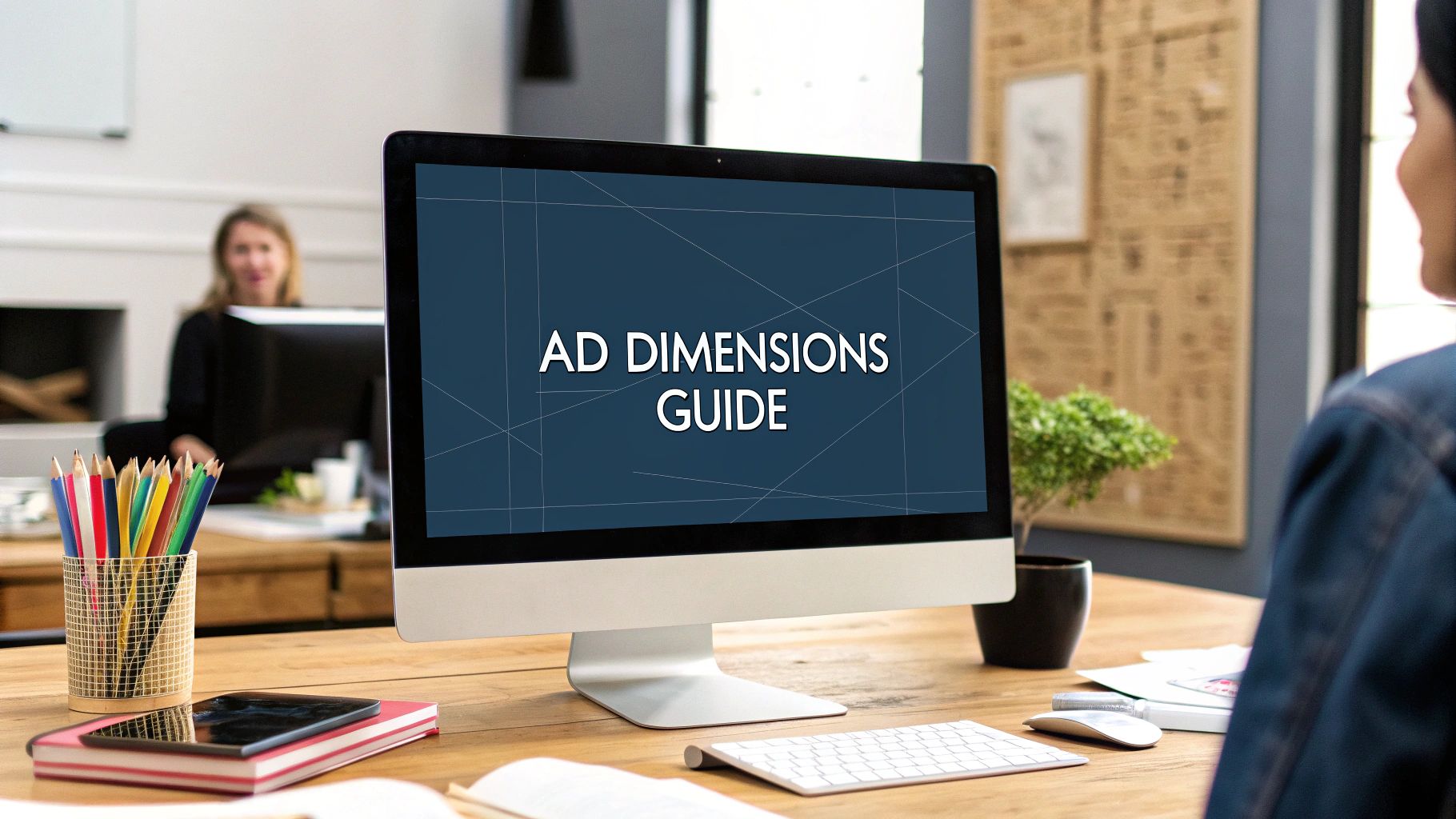

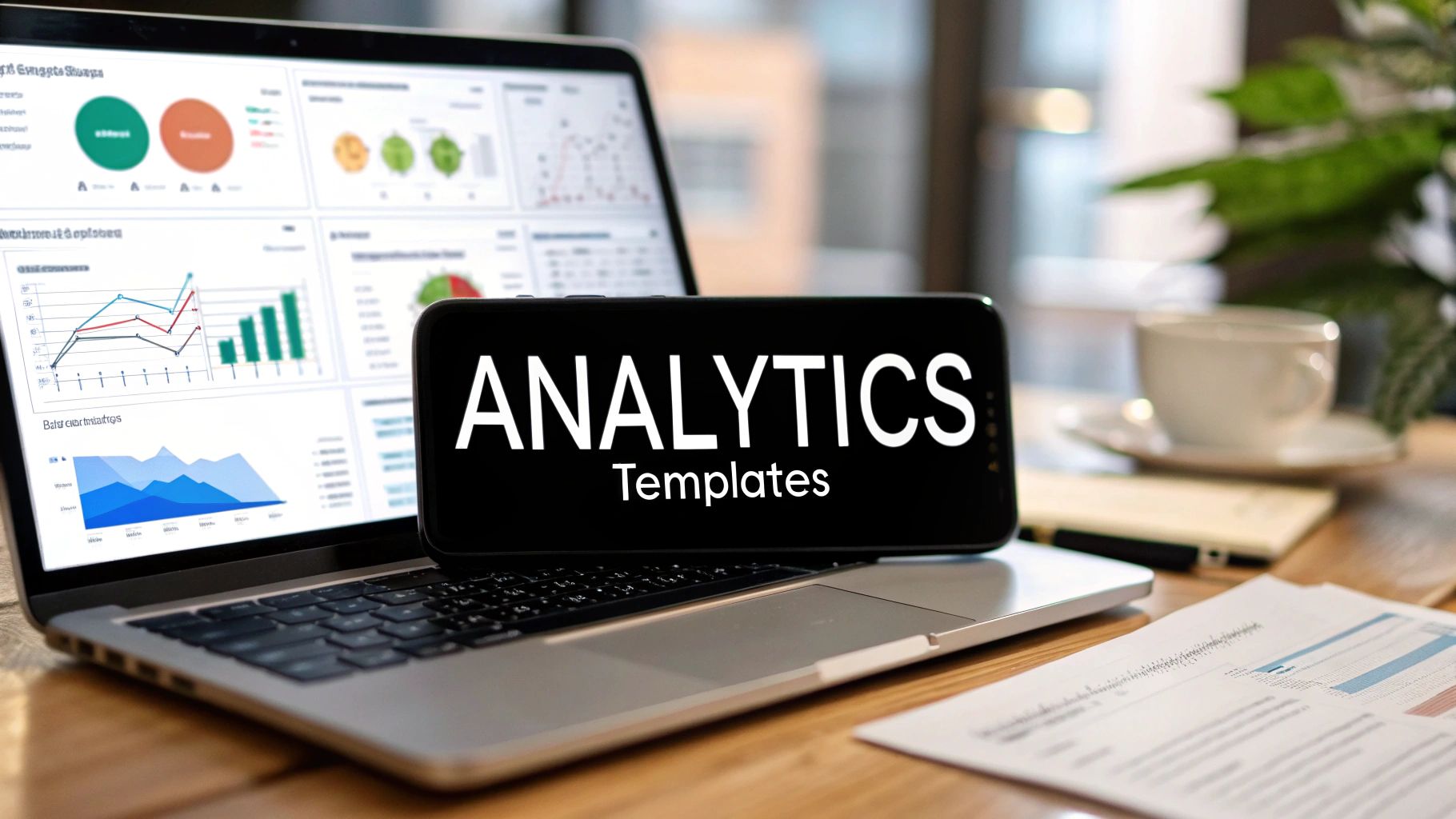
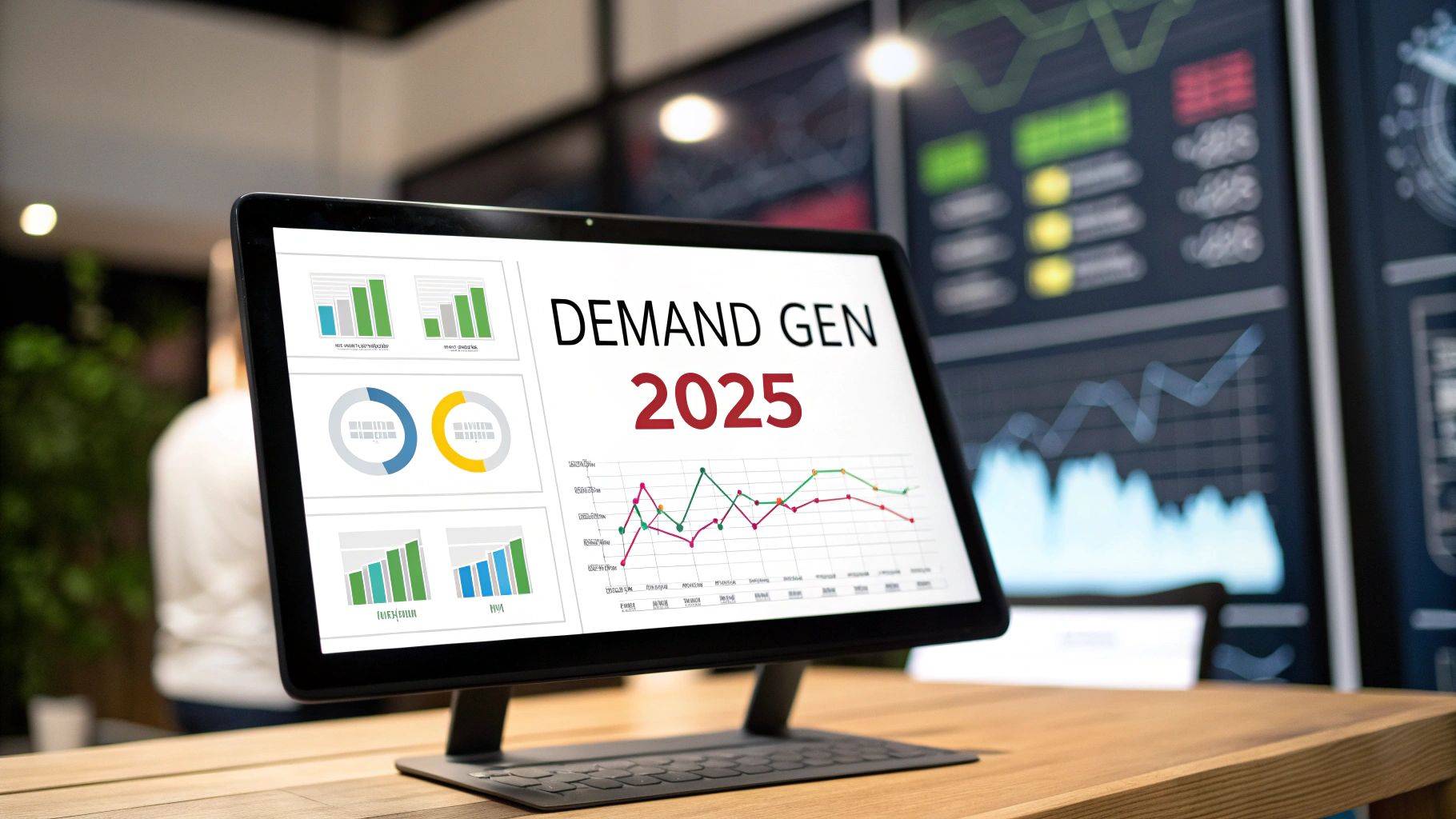

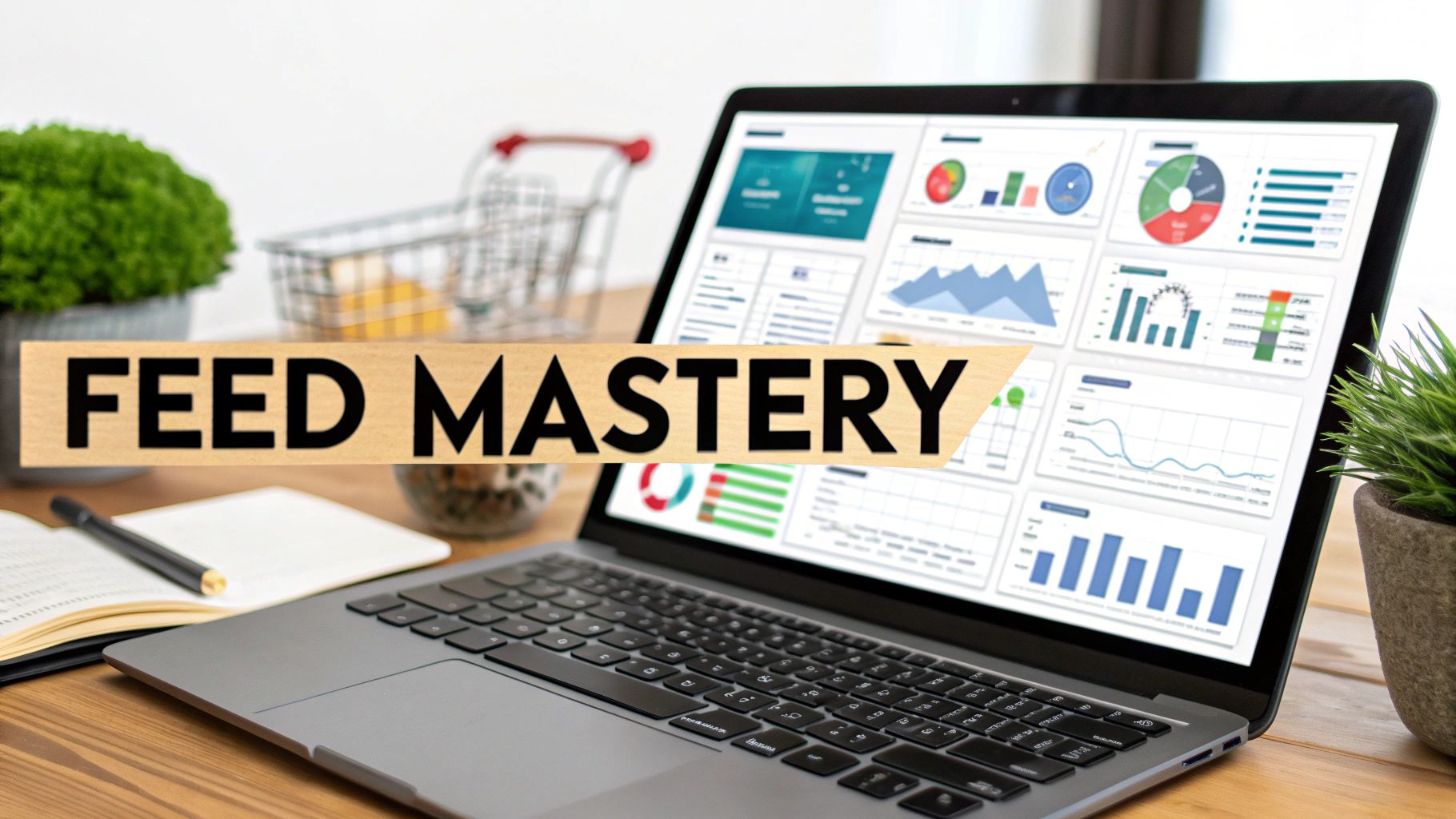

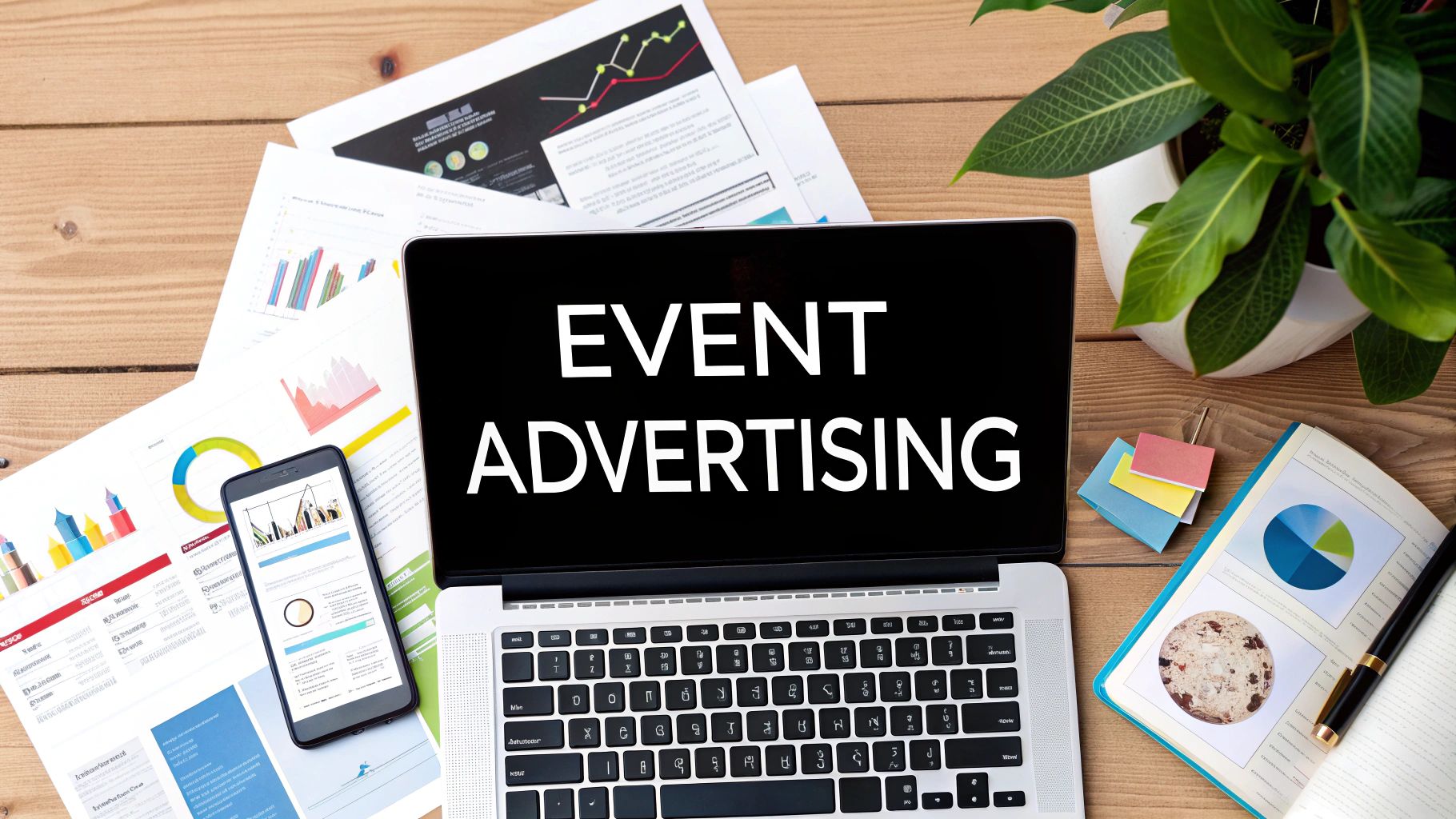

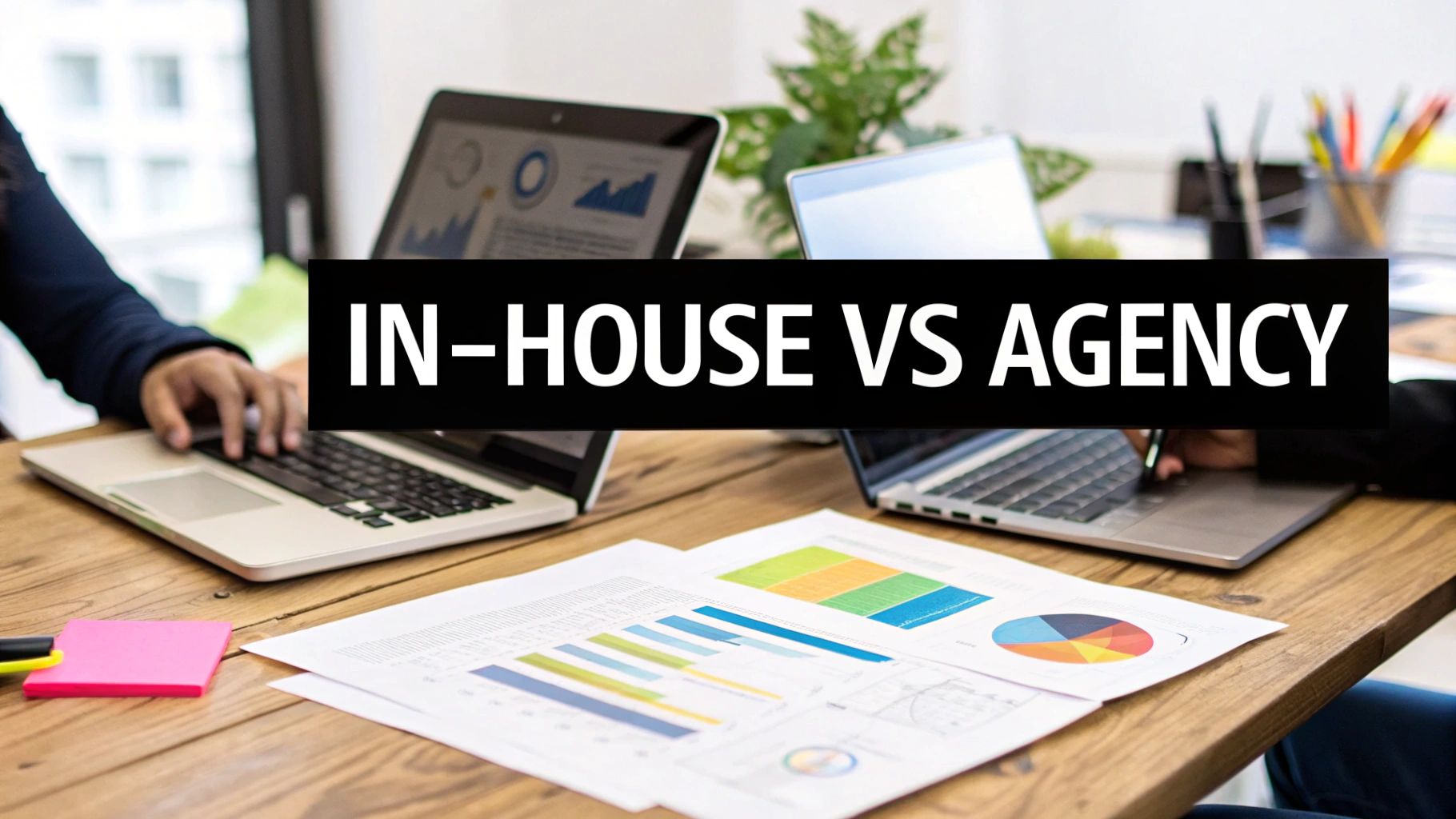
Comments